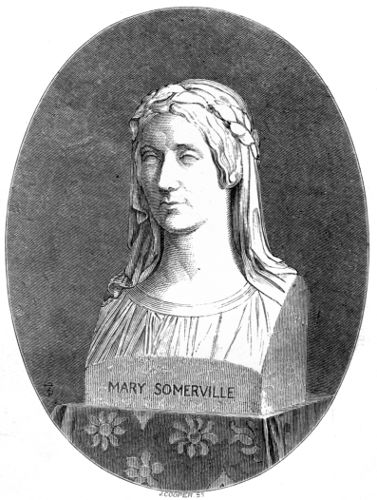This book uses some unusual characters, such as those representingthe constellation Aries (♈) and Libra (♎). These characters may failto display correctly if the font you are using does not support them.
Some corrections have been made to the printed text. Theseare listed in a second transcriber’s note at the end of the text.

MARY SOMERVILLE
J. COOPER Sc.
ON
THE CONNEXION
OF
THE PHYSICAL SCIENCES.
“No natural phenomenon can be adequately studied in itself alone—but,to be understood, it must be considered as it stands connected withall Nature.”—Bacon.
Florence, Nov. 1, 1858.
CONTENTS.
Introduction
Attraction of a Sphere—Form of Celestial Bodies—Terrestrial Gravitation retains the Moon in her Orbit—The Heavenly Bodies move in Conic Sections—Gravitation Proportional to Mass—Gravitation of the Particles of Matter—Figure of the Planets—How it affects the Motions of their Satellites—Rotation and Translation impressed by the same Impulse—Motion of the Sun and Solar System
Elliptical Motion—Mean and True Motion—Equinoctial—Ecliptic—Equinoxes—Mean and True Longitude—Equation of Centre—Inclination of the Orbits of Planets—Celestial Latitude—Nodes—Elements of an Orbit—Undisturbed or Elliptical Orbits—Great Inclination of the Orbits of the New Planets—Universal Gravitation the Cause of Perturbations in the Motions of the Heavenly Bodies—Problem of the Three Bodies—Stability of Solar System depends upon the Primitive Momentum of the Bodies
Perturbations, Periodic and Secular—Disturbing Action equivalent to three Partial Forces—Tangential Force the cause of the Periodic Inequalities in Longitude, and Secular Inequalities in the Form and Position of the Orbit in its own Plane—Radial Force the cause of Var